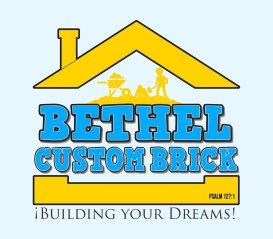Historical homes are treasures that embody architectural beauty and craftsmanship from a bygone era. One of the defining features of these homes is often their masonry chimneys, which serve as both functional and aesthetic elements. Over time, however, these chimneys can suffer from wear and tear, weather exposure, and age-related deterioration. Restoring a masonry chimney on a historical home requires specialized skills, attention to detail, and a deep understanding of period-specific materials and techniques.
Here’s a comprehensive guide to what’s involved in restoring masonry chimneys on historical homes and why it’s essential to approach the task with care.
Why Restore Historical Chimneys?
A chimney cap is a cover, usually made of metal, that sits on top of the chimney. It often includes a mesh screen around the sides, providing ventilation while keeping out unwanted elements. Chimney caps come in various designs and materials to match your chimney’s structure and aesthetic.
- 1. Preserving Architectural Integrity: Historical chimneys are often integral to a home’s design and character. Restoring them maintains the architectural charm and ensures consistency with the original style.
- 2. Ensuring Safety: Over time, cracks, spalling bricks, and deteriorated mortar can compromise the chimney’s structural stability, posing risks to the home and its occupants.
- 3. Enhancing Functionality: Restored chimneys improve ventilation, reduce fire hazards, and ensure proper performance of the fireplace or heating system.
- 4. Protecting Historical Value: A well-preserved chimney contributes to the overall value of a historical home, making it more appealing to buyers and maintaining its historical significance.
Challenges in Restoring Historical Masonry Chimneys
Restoring a chimney on a historical home presents unique challenges that require specialized expertise:
- Matching Original Materials: Locating or replicating bricks, mortar, and other materials that match the original construction can be challenging but is essential for an authentic restoration.
- Complying with Preservation Guidelines: Historical homes may be subject to local preservation regulations, requiring adherence to specific restoration standards.
- Addressing Hidden Damage: Years of neglect or improper repairs may have caused hidden structural issues that need to be addressed during restoration.
- Balancing Modern Safety Standards: Restoration must ensure the chimney meets contemporary safety codes while retaining its historical integrity.
Steps Involved in Restoring a Historical Chimney
1. Assessment and Inspection:
- What Happens: A thorough inspection identifies the extent of damage, structural weaknesses, and potential safety hazards. This includes examining the bricks, mortar joints, flue, crown, and flashing.
- Why It's Important: Understanding the scope of work ensures that all issues are addressed during the restoration process.
2. Documenting the Original Design:
- What Happens: Photographs, measurements, and notes are taken to document the chimney’s original design, materials, and craftsmanship.
- Why It's Important: This step preserves the chimney’s historical character and guides the restoration process.
3. Removing Damaged Materials:
- What Happens: Cracked or spalled bricks, deteriorated mortar, and damaged components are carefully removed to prevent further damage.
- Why It's Important: Proper removal ensures the structural stability of the surrounding masonry.
4. Rebuilding with Period-Appropriate Techniques:
- What Happens: The chimney is rebuilt using traditional techniques and materials that match the original construction. This includes hand-laid bricks, lime mortar, and period-specific patterns.
- Why It's Important: Authentic restoration maintains the historical aesthetic and structural integrity.
5. Repairing or Replacing the Chimney Crown:
- What Happens: The chimney crown is repaired or replaced using durable materials to protect the chimney from water damage.
- Why It's Important: A sound crown ensures long-term protection against weather exposure.
6. Waterproofing the Masonry:
- What Happens: A breathable waterproof sealant is applied to the chimney to protect it from moisture while allowing trapped water to escape.
- Why It's Important: Waterproofing prevents future damage caused by freeze-thaw cycles and water infiltration.
7. Addressing the Flue and Liner:
- What Happens: The flue is cleaned, repaired, or relined to ensure proper ventilation and safety.
- Why It's Important: A functional flue reduces fire risks and improves fireplace efficiency.
8. Installing or Repairing Flashing:
- What Happens: Flashing is installed or repaired to create a watertight seal between the chimney and roof.
- Why It's Important: Proper flashing prevents leaks and protects both the chimney and roof structure.
Tips for Maintaining a Restored Historical Chimney
Once your historical chimney is restored, regular maintenance is essential to preserve its condition and prevent future issues:
- Schedule Annual Inspections: Regular inspections help catch minor issues before they escalate into costly repairs.
- Reapply Waterproofing Treatments: Refresh waterproofing every 5–7 years to maintain protection against moisture.
- Clean the Chimney Regularly: Professional chimney cleaning removes soot, creosote, and debris that can damage the masonry.
- Monitor for Weather Damage: Check the chimney for cracks, leaks, or efflorescence after storms or freezing weather.
Bethel Custom Brick – Expert Chimney Restoration for Historical Homes in the Detroit Metro Area
At Bethel Custom Brick, we specialize in restoring masonry chimneys on historical homes with precision and care. Serving the Detroit Metro area, our skilled team combines modern expertise with traditional craftsmanship to preserve the character and functionality of your chimney. Contact us today to schedule an inspection and let us help protect and enhance your home’s historical legacy.


